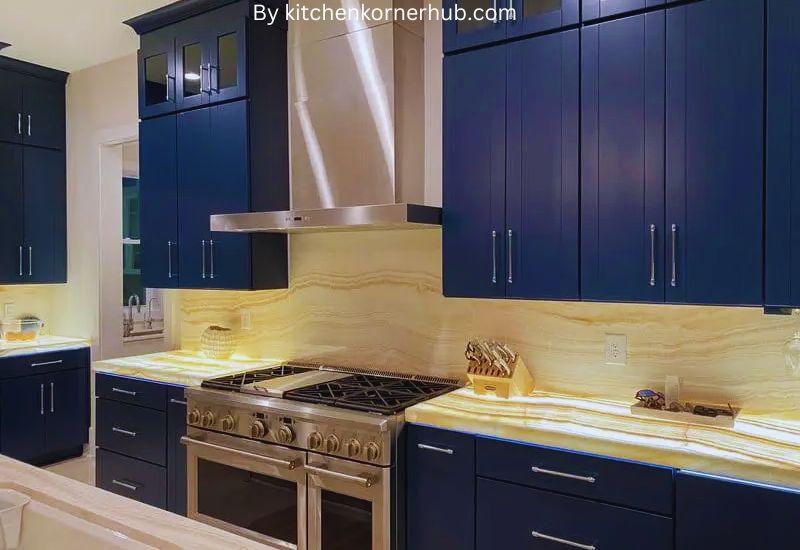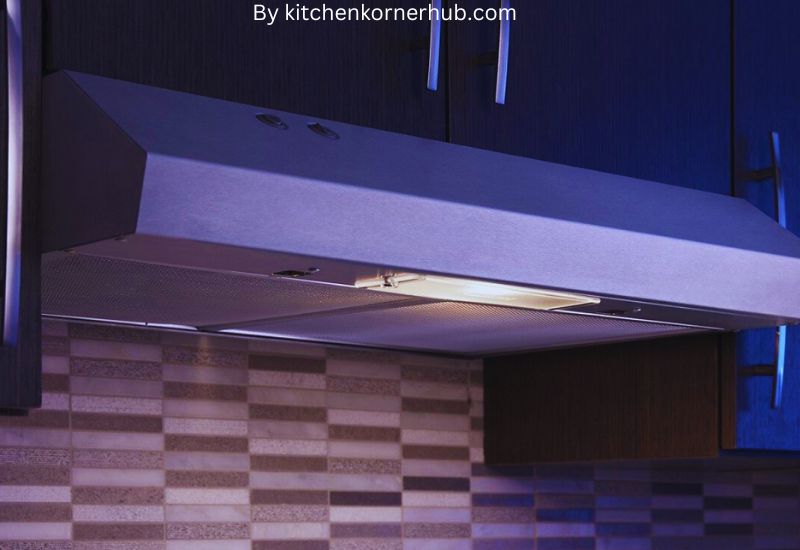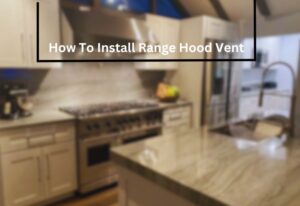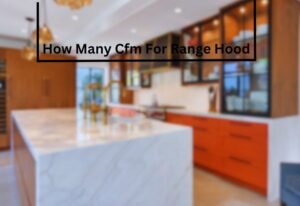Have you ever wondered if it’s okay to have your range hood connected to a small appliance circuit? It’s a common question for homeowners who want to ensure their kitchen setup is both functional and safe. In this exploration, we’ll dive into the practicality and safety considerations of connecting your range hood to a small appliance circuit.
Can Range Hood Be On Small Appliance Circuit? Yes, a range hood can typically be on a small appliance circuit. However, it’s essential to check your local electrical codes and the specific requirements of your range hood model. Some larger or more powerful range hoods may require a dedicated circuit to ensure safety and proper functioning. Always consult a licensed electrician if you have any doubts or questions about your electrical setup.
We’ll break down the technical jargon and provide you with straightforward insights to help you make informed decisions about your kitchen’s electrical setup. So, if you’re curious about whether your range hood can share space with your small appliances on the same circuit, keep reading to find out what’s best for your home.
“Exploring the Electrical Limits: Can a Range Hood Share a Small Appliance Circuit?”

In our quest to make our kitchens efficient and functional, we often encounter a dilemma when it comes to electrical circuits. The range hood, an essential kitchen appliance, raises questions about whether it can share the same small appliance circuit as other kitchen gadgets. Let’s delve into this electrical conundrum and explore the possibilities and limitations.
Understanding Small Appliance Circuits
Before we dive into the specifics of range hoods, it’s important to grasp the concept of small appliance circuits. These circuits are designed to power the various small appliances you use in your kitchen, such as blenders, toasters, and coffee makers. They are typically limited to 20 amperes and are meant to handle the collective power needs of these devices.
The Role of a Range Hood
A range hood serves a crucial function in your kitchen by venting out smoke, odors, and excess heat generated during cooking. It’s vital for maintaining air quality and a comfortable cooking environment. Range hoods come in different types, including ducted and ductless, each with its own electrical requirements.
The Electrical Demand of Range Hoods
Range hoods vary in their power consumption, depending on factors like size, fan speed, and lighting. Smaller hoods with basic features may draw around 100-200 watts, making them compatible with small appliance circuits. However, larger, high-powered hoods can consume significantly more electricity, often surpassing the capacity of a small appliance circuit.
Safety Considerations
Safety should always be a top priority when dealing with electrical circuits. Overloading a circuit can lead to overheating, tripped breakers, or even electrical fires. If a range hood with a high power demand is connected to a small appliance circuit, it may overload the circuit and create safety hazards.
Options and Solutions
If you’re faced with the dilemma of sharing a small appliance circuit with a range hood, consider these options:
Dedicated Circuit:
Installing a dedicated circuit for the range hood is the safest and most reliable solution, especially for high-powered models. This ensures that the hood won’t interfere with other kitchen appliances.
Choosing a Low-Power Hood:
Opt for a smaller, energy-efficient range hood that falls within the capacity of a small appliance circuit. This is a practical choice if you have limited electrical resources.
Consult a Professional:
When in doubt, seek advice from a qualified electrician. They can assess your kitchen’s electrical needs and provide recommendations tailored to your specific situation.
“Breaking it Down: Range Hood Electrical Requirements and Small Appliance Circuits”

Introduction: In this comprehensive note, we’ll unravel the electrical requirements of range hoods and delve into the world of small appliance circuits. Understanding these aspects is crucial for anyone looking to set up a kitchen or renovate one. Let’s break it down into manageable sections for easy comprehension.
Range Hood Electrical Requirements: Range hoods play a vital role in keeping your kitchen clean and smoke-free. To ensure they work efficiently, you need to understand their electrical requirements.
Voltage and Amperage:
Range hoods typically require 120 volts of electricity and a specific amperage rating. This information can usually be found in the product manual or on a label inside the range hood.
Dedicated Circuit:
Most range hoods need a dedicated electrical circuit. This means the circuit serves only the range hood and no other appliances. It ensures a stable power supply, preventing overload issues.
Wiring:
Range hoods usually come with a power cord or must be hardwired directly to the electrical supply. Follow the manufacturer’s instructions to ensure safe and correct wiring.
Small Appliance Circuits: Now, let’s explore the electrical circuits that power your small kitchen appliances.
Purpose:
Small appliance circuits are designed to power countertop appliances like blenders, toasters, and coffee makers. They are distinct from regular kitchen outlets.
Amperage and Capacity:
Small appliance circuits are typically 20-amp circuits. This means they can handle a higher load compared to standard 15-amp circuits, making them suitable for appliances with higher power requirements.
Outlets:
These circuits usually feature multiple outlets in the kitchen. It’s crucial to distribute your appliances across these outlets to prevent overloading a single circuit.
GFCI Protection:
For safety, small appliance circuits often have Ground Fault Circuit Interrupters (GFCIs) installed. These devices protect against electrical shocks and should be regularly tested to ensure they’re functioning correctly.
“Small Appliance Circuit Mysteries: Is a Range Hood a Compatible Addition?”

In the world of home appliances, one often encounters mysterious questions about compatibility and functionality. One such enigma is whether adding a range hood to your kitchen’s small appliance circuit is a good idea. Let’s delve into this intriguing topic to uncover the secrets behind it.
Understanding Small Appliance Circuits:
Small appliance circuits are those dedicated electrical circuits in your home designed to power kitchen gadgets like blenders, toasters, and coffee makers. They are usually 20-amp circuits that keep your countertop devices humming along smoothly. But, can they handle the additional load of a range hood?
The Role of a Range Hood:
A range hood is an essential kitchen device that helps eliminate cooking odors, smoke, and grease, while also enhancing the overall ventilation in your kitchen. But, is it compatible with your existing small appliance circuit?
Analyzing Electrical Requirements:
Range hoods come in various sizes and styles, and their electrical demands can vary widely. Some require a dedicated circuit due to their higher power consumption, while others can share a circuit with other appliances. To solve this mystery, check the manufacturer’s specifications for your specific range hood model.
Safety Considerations:
Safety should always be a top priority when dealing with electrical circuits. Overloading a circuit can lead to tripped breakers, electrical fires, or damaged appliances. It’s crucial to ensure that adding a range hood won’t compromise the safety of your kitchen.
Consulting an Electrician:
When in doubt, it’s wise to consult a qualified electrician. They can assess your kitchen’s electrical setup and determine whether your existing small appliance circuit can accommodate a range hood. They’ll consider factors like circuit load, wiring capacity, and local electrical codes to provide a safe and effective solution.
“Electrical Considerations for Range Hoods: Can They Coexist with Small Appliances?”

When it comes to setting up your kitchen, electrical considerations are crucial to ensure a safe and efficient cooking environment. One common dilemma is whether range hoods and small appliances can peacefully coexist in your kitchen space. Let’s dive into this topic with some essential insights.
Understanding Range Hoods:
Range hoods, also known as extractor hoods or exhaust hoods, play a vital role in maintaining a clean and odor-free kitchen. Their primary function is to remove smoke, steam, and cooking odors produced during meal preparation. To accomplish this, range hoods typically come equipped with a fan and a filter system.
Power Requirements:
Before installing a range hood, it’s essential to consider its power requirements. Range hoods typically need a dedicated circuit to operate efficiently. These circuits are usually rated at 120 volts and 15 amps. Ensure that the electrical panel in your kitchen can accommodate the additional load without overloading the circuit.
Small Appliances in the Mix:
Now, the question arises: can range hoods coexist with small appliances like blenders, toasters, and coffee makers? The answer is yes, but there are a few considerations to keep in mind.
Outlet Placement:
Ensure that outlets for small appliances are positioned away from the range hood’s exhaust path. Placing an outlet too close to the hood can expose it to moisture and grease, potentially causing electrical hazards. It’s best to keep outlets at a safe distance.
Load Distribution:
Be mindful of the overall electrical load in your kitchen. Avoid running multiple high-wattage appliances simultaneously on the same circuit as the range hood. This can lead to circuit overloads, tripped breakers, or even electrical fires. Distribute the load evenly among different circuits to prevent such issues.
Dedicated Circuits:
Consider installing dedicated circuits for high-power appliances. For instance, if you frequently use a microwave, it’s a good idea to have a dedicated circuit for it. This reduces the risk of overloading shared circuits.
Professional Installation:
To ensure the safe coexistence of range hoods and small appliances, it’s advisable to seek professional electrical installation services. Electricians can assess your kitchen’s electrical capacity, make necessary adjustments, and ensure compliance with safety codes.
“Unveiling the Wiring Puzzle: Range Hoods and Small Appliance Circuits”

In our daily lives, small appliances play a significant role in making our routines more convenient. However, have you ever wondered about the hidden wiring that powers these devices? In this note, we will unravel the intriguing world of range hoods and small appliance circuits, shedding light on the essential aspects that keep our kitchens and homes humming smoothly.
Understanding Small Appliance Circuits
Small appliance circuits form the backbone of our modern kitchens, powering devices like microwaves, blenders, toasters, and coffee makers. These circuits are designed to handle lower electrical loads compared to larger appliances like refrigerators or ovens. They typically run on a 15-amp circuit, ensuring that various appliances can function simultaneously without overloading the circuit.
The Role of GFCIs (Ground Fault Circuit Interrupters)
Safety is paramount when it comes to electrical circuits, especially in the kitchen. GFCIs are safety devices that protect against electric shock by immediately cutting off power when they detect an imbalance in electrical current. In kitchens, GFCIs are often installed on small appliance circuits to minimize the risk of accidents caused by water or other factors.
Range Hoods: The Unsung Heroes
Range hoods might not grab our attention like fancy kitchen gadgets, but they serve a crucial purpose. These ventilation systems help remove smoke, odors, and airborne particles produced during cooking, creating a healthier indoor environment. Range hoods are typically hardwired to their own dedicated circuit, ensuring they operate efficiently and without interruption.
Balancing the Load
One of the key considerations in small appliance circuit design is load balancing. To prevent circuit overload and tripped breakers, it’s essential to distribute the electrical load evenly among the outlets. This means avoiding plugging too many high-wattage appliances into a single circuit, which can lead to overheating and potential fire hazards.
Installation and Maintenance
Proper installation and regular maintenance of small appliance circuits are critical for safety and functionality. Qualified electricians should handle circuit installation to ensure compliance with local electrical codes. Routine checks for loose connections, damaged wiring, or signs of wear and tear can prevent accidents and costly repairs down the line.
Conclusion
In wrapping up our discussion, it’s clear that installing a range hood on a small appliance circuit isn’t the best idea. While it might seem convenient, it can overload the circuit and create safety hazards. Instead, it’s advisable to use a dedicated circuit for your range hood to ensure it functions properly and safely. Remember, safety should always come first when dealing with electrical appliances in your home. So, when it comes to range hoods, keep them on their own circuit for peace of mind and efficient operation.
Frequently Asked Question(Can Range Hood Be On Small Appliance Circuit)
Can you put range hood on small appliance circuit?
Yes, you can typically put a range hood on a small appliance circuit. Range hoods are considered kitchen appliances, and they are often connected to a dedicated circuit to ensure they have enough power and do not overload other circuits.
However, the specific electrical requirements may vary depending on the model of the range hood and local electrical codes. It’s essential to consult the manufacturer’s instructions and local electrical codes to determine the appropriate circuit size and wiring method for your specific range hood.
What can be on a small appliance circuit?
A small appliance circuit is designed to supply power to various small kitchen appliances. These can include items like toasters, blenders, coffee makers, microwaves, and similar devices commonly found in kitchens.
Small appliance circuits are intended for low to moderate power consumption items used in food preparation and cooking. However, it’s crucial to adhere to local electrical codes and guidelines when determining what can be connected to a small appliance circuit to ensure safety and prevent overloading.
How much power does a range hood need?
The power requirements of a range hood can vary significantly depending on the size and type of the hood. On average, a typical range hood used in a residential kitchen may require between 100 to 300 watts of power.
However, larger and more powerful range hoods designed for commercial kitchens may require more electricity. It’s essential to check the manufacturer’s specifications for your specific range hood model to determine its exact power requirements. This information can usually be found in the product manual or on a label attached to the hood.
Can I wire a range hood to an outlet?
Yes, you can wire a range hood to an outlet, but it’s important to do it correctly and safely. Range hoods are typically hardwired directly into the electrical circuit or connected to a dedicated electrical box. If you want to connect your range hood to an outlet, you should consult a qualified electrician to ensure that the wiring is done correctly and in compliance with local electrical codes.
Additionally, make sure that the outlet and circuit you plan to use can handle the power requirements of the range hood without overloading the circuit. Safety should always be a priority when working with electrical connections in your home.




